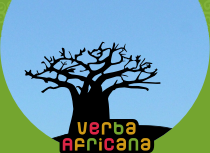Concepts and Definitions
- Cultural Evolutionism
-
The basic idea of cultural evolutionism was that a universal process of advance had taken place in the history of humanity. This process was seen as ‘evolutionary progress’, involving different successive stages of cultural ‘development’ from primeval forms of association and exchange to the most complex forms of culture. The typical line of development was from ‘primitive’ to ‘barbarian’ to ‘civilized’ (often including the associated idea of selection and supremacy of the strongest and most ‘civilized’). The parameters were established by the Euro-American development and were connected to the theory of human races: the racial characteristics were thought to be hereditary and permanent. Distinctive elements of evolutionism, presented in the main texts of this approach such as Primitive Culture (1871) by Edward Burnett Tylor and Ancient Society (1877) by Lewis Henry Morgan, are universalizing diachronic comparison, without limits in time and geo-cultural space, and polygenist theory (the dispersed origin of the races and cultures) related to the idea of human cultures’ parallel development. There are two theoretical implications stemming from the interpretation of past and present cultures in cultural evolutionism that are nowadays challenged. One, cultural evolutionism expressed a deterministic and universalistic conception of human history fixed in a unilinear human process of advance that does not account for alternative historical processes. Moreover, changes in the past were interpreted in terms of progression towards a higher, more civilized, formation. This is, however, a specific interpretation of historical changes, since we can also interpret changes as deterioration, or as random fluctuations without a common linear development or goal. Second, the idea that ‘primitives’ and ‘barbarians’ represent past stages of humanity in the present time implies that these groups and cultures are thought of as being locked forever in time, as ‘frozen’ moments in the history of humanity, and thus are perceived as being ‘beyond history’.
- Diffusionism
As an approach to cultural materials and processes, diffusionism was in vogue at the end of 19th century. Evolutionists and diffusionists diverged in the interpretation of cultural similarities among societies: the evolutionists believed that similarities proceeded from parallel stages of culture (polygenist theory); while diffusionists believed that there was a cultural ‘center’ and that cultural and material elements (or bundles of them) circulated from that central area to the others (monogenist theory). According to diffusionists, the diachronic comparison —limited to geographical and cultural areas— would establish the stages of diffusion of the considered phenomena. It is better to speak of ‘diffusionisms’, since the monogenist theory characterized ‘hyperdiffusionnist’ approaches such as G. E. Smith and W. Perry’s works that hypothesized the origin of all cultures from one cultural area - Ancient Egypt, while a rather limited polygenist theory —linked to the idea of diffusion from a few cultural areas— characterized the approach of the Austro-German school of W. Schimdt, L. Frobenius and F. Graebner. Diffusionism, however, included research on human development and the oldest stages of humanity as well as the idea of the superiority of one culture over the others, and can be considered as a form of cultural evolutionism. Wilhelm Schmidt (1868-1954), for example, theorized on a conjectural universal development that, based on historical-geographical areas of diffusion, could determine the (judgmental) classification of various populations and cultures on the basis of their being ‘primitive’ or ‘civilized’.
- Actantial roles
-
Actantial roles are indicated in narratological analyses (Propp 1968: 72-75, Greimas 1971: 102-103, Rimmon-Kenan 1983: 34-34, Bal 1985: 25-36) as pairs (Subject/Object; Sender (or Power)/Receiver, Helper/Opponent) indicating classes of actors that share identical relationships with respect to the final aim or goal of the narrative (teleological relationship). For example, the Subject aspires toward the Object (i.e. young crab wants a head); Sender/Power allows or prevents the Receiver (often corresponding to the Subject) from acquiring the Object (i.e. Grandfather crab makes heads and puts young crab to the test); Helper and Opponent respectively help or constrain the Subject (the bosom friend keeps young crab from obtaining a head). Several actors can play one actantial role and an actor can also change actantial role (for example, a man (Subject) wants to marry the chief’s daughter (Object); the chief (Sender) puts the man to the test; two lions (Helper) help the man while the chief (Opponent) tries to constrain him).
The ‘character’ is the ‘actor’ provided with distinctive qualifications (male/female/third-sex, young/old/middle-aged etc.). An actor is a structural position, while a character is a complex semantic unit (Bal 1985: 79).
- Denise Paulme's model
-
In Denise Paulme's model (1976:19-50) there are seven main narrative forms: ascending (from lack to amelioration); descending (from normal situation to deterioration or lack), cyclical (from the one status to the other and back to the first one); spiral (repeated cyclical moves), mirror (two parallel moves with opposed characters), hourglasses (intersection of moves with exchange of characters and roles), complex (combination of several forms). See also Finnegan 1992:167-169.

